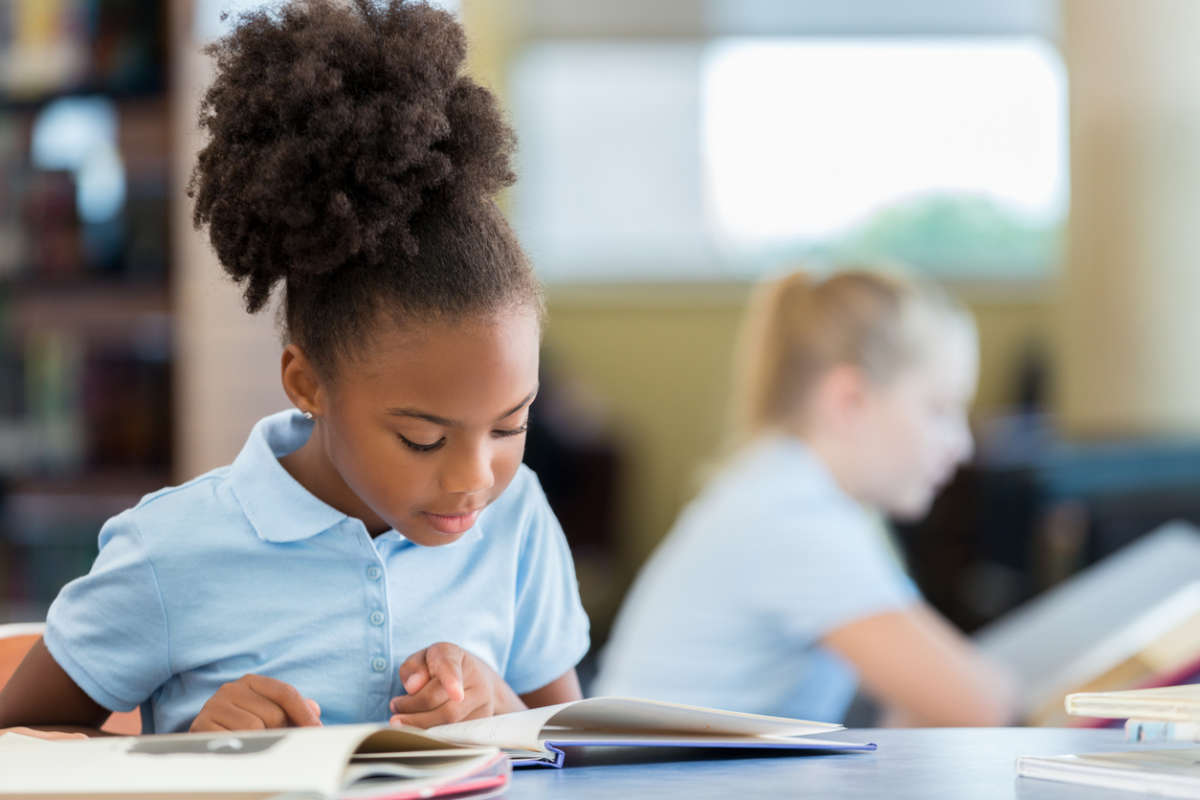
-
 By Amy McKinney
By Amy McKinney
Effective reading instruction is dependent on many factors, some of which are not within a teacher’s control. But what about those that are?

"I was born to teach."
Many teachers feel this is their motto, a belief that guides them through their professional experiences. I believe this to be true, but I feel strongly that Robert John Meehan's quote should be more widely held:
"I was born to teach, but I live to learn."
No matter how long I've been teaching, I always feel like I can improve my teaching practices.
I re-read many of my texts to remind myself of best practices, and I seek out new research. What I find supports the fact that I'm doing the right thing for my students, but I never fail to unveil some new learning. And that's how it should be.
Teaching students how to read ("learning to read"), and eventually teaching them to read for understanding ("reading to learn") are two of the most difficult challenges any teacher faces. In math, there are algorithms; in science, there are procedural steps; in history, there are facts. But reading -- the teaching of it -- can be so complex that there are literally thousands of books written on the topic.
Effective reading instruction is dependent on many factors, some of which are not within a teacher's control. But what about those that are?
Five Research-Based Reading Comprehension Strategies to Use in Your Classroom
1. Read-Alouds
There's no denying the social and emotional benefits from a picture book or chapter book read aloud. Students also benefit from listening to a fluent reader, and the conversations surrounding important topics brought up in a read aloud are invaluable to all students, but most importantly to students with limited background experiences.
2. Modeling
Students not only need to be reminded of what good readers do, they need to see it for themselves. Modeling allows the teacher to demonstrate for students the invisible process that goes on within a reader's mind. Creating a purpose for reading, asking questions, and adjusting reading rate are just a few examples of things a good reader does that might be missed by a beginning reader.
3. Graphic Organizers
Whether you adhere to the philosophy of multiple intelligences or not, there is no denying that readers think and respond differently, and we must meet them where they are.
Graphic organizers are a type of scaffolding that some students require in order to make sense of what they're reading. They don't have to be fancy or include funny clipart (in fact, the more streamlined, the better for some kids!). A simple T-chart for cause and effect, for example, along with keywords students might encounter in that type of text, are all that is needed to support some readers.
4. Have Students Bring Their Own Unique Experiences
Because children bring their own background experiences to what they read, they create their own meaning to it. There can be no strict "right" or "wrong" answer to topic-specific comprehension questions, and our use of them and text-specific questions must be balanced. Ask questions related to text type, and include inquiries that help develop background knowledge. Because good readers need both.
5. Turn and Talk
Regardless of how you implement it, this strategy is imperative to your students' growth as readers. Provide them with daily opportunities to discuss what they've read with their peers.
"Mediocre teachers tend to talk mostly about teaching. Exemplary teachers talk almost exclusively about learning." -- Robert John Meehan
Prior to placing them in groups or partners, I give each of my students a sticky note, and direct them to the essential question they will respond to. This gives them a chance to think independently before having to support their ideas with their group mates. They then must form a group response that they can all agree to, which necessitates each student to be flexible in their thinking. Readers will become more engaged, requiring them to think critically, and to defend their ideas.
If you haven't tried any of these strategies with the readers in your classroom, make it a goal to implement one or two.
If we as teachers are not building a life of learning, how can we expect our students to do it? Whether we've been teaching for one year or for 20, we all have something we can learn.
How do you build a life of learning? Let us know on Instagram, Facebook, Twitter, and Pinterest.
Want to read more from this author? Check out Amy's tips for managing student behavior, dealing with difficult parents, building a positive classroom community, learn what special education teachers wish "regular" education teachers knew, or find out how to implement guided math.
Author Bio:
Amy McKinney, M.Ed., is a third grade teacher in Pennsylvania. She has been teaching for eleven years, eight of them in special education. Her experience working with students with special needs has helped form her philosophy on teaching and collaborating with her colleagues. Follow her on Instagram: @theuniqueclassroom.
